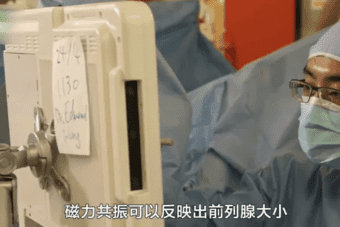Epidemiology
One of the most common prostate problems is benign prostatic hyperplasia (BHP), also known as prostate gland enlargement. It is a condition often seen in males aged 40 or above. According to Hong Kong’s Department of Health, over half of all men over the age of 60 have BPH, with the condition seen in almost 90% of men over the age of 80.
What is Benign Prostatic Hyperplasia (BHP)?
A part of the male reproductive system, the prostate is a gland that produces a thick fluid that forms part of semen. BHP is an enlarged prostate caused by non-cancerous growth within the gland. As the prostate is located beneath the bladder with the urethra passing through it, an enlarged prostate may block urine flow and cause various urinary symptoms. Prostate problems can affect males of all ages.
Symptoms
Early symptoms of BHP may include frequent urination and increased frequency of urination at night. If BHP worsens, other symptoms may arise, such as difficulty urinating, blood in the urine, or even inability to urinate. More severe complications include urinary tract infection, bladder stones, and damage to bladder or kidney function. The American Urological Association recommends all males aged 55 and over to undergo regular prostate exams even in the absence of symptoms.
Causes
BHP is mainly linked to aging, while risk factors include obesity, stress, depression, excessive consumption of alcohol, smoking, medication, diet, and poor hygiene.
Risk Factors
- Aging
- Smoking
- Excessive consumption of alcohol
- Obesity
Diagnosis
|
Clinical Diagnosis |
If the urologist suspects prostate problems, he/she will use the International Prostate Symptom Score (IPSS) questionnaire to understand the patient’s background, medical history, lifestyle habits, etc. A digital rectal examination may also be performed. |
|
Urine Test |
By analyzing a urine sample under the microscope, the doctor will be able to determine whether there is an infection. This may be followed by a urinary flow test*, which measures the strength and amount of urine flow to find out whether there is obstruction. Finally, a bladder ultrasound may be conducted to check for residual urine. |
|
Prostate-Specific Antigen (PSA) Blood Test |
If the urologist suspects prostate cancer, he/she may recommend a PSA blood test to assess the patient’s risk. |
*A urinary flow test is a common urological test and is conducted in a designated room located on the first floor of the hospital. A nurse first explains the procedure to the patient, after which the patient urinates into a special funnel device that automatically records the information needed, such as average and highest rate of flow, amount of urine, length of time until all urine has been passed, when the highest rate of flow is reached, and amount of residual urine. A report will be available after the test, and medical staff will conduct an ultrasound to detect post-void residual urine, which will provide further information to support the doctor’s diagnosis.
Treatment
Appropriate treatment is often effective in alleviating mild urinary symptoms.
|
Active Surveillance and Medication |
If symptoms are mild, the doctor may recommend active surveillance, lifestyle changes, and medication that relaxes the muscles of the prostate and bladder or shrinks the prostate. This may be adequate to alleviate blockage of the urethra and other urinary symptoms. |
|
Transurethral Resection of the Prostate (TURP) |
A resectoscope is inserted through the urethra and the surgeon uses this to cut away prostate tissue to alleviate urinary symptoms. Patients experience minimal blood loss during this one-to-two-hour minimally invasive procedure, and are usually discharged within three to five days. |
|
Water Vapor Therapy (Rezūm) |
Another minimally invasive option is water vapor therapy, where a small tube is inserted through the urethra to the prostate, and sterile steam is injected to destroy enlarged prostate tissue, removing obstructions to the urethra. The procedure requires only mild sedation and can be completed within 15 minutes. Patients are usually discharged on the same day. |
| UroLift Prostatic Urethral Lift (UroLift)
|
If the enlarged prostate tissue is not too large and does not protrude into the bladder, a prostatic urethral lift is a minimally invasive approach that may be considered. In this procedure, the doctor inserts a special device through the urethra to access the prostate. Small implants are then placed to lift and hold the enlarged prostate tissue away from the urethra, thereby increasing the opening of the urethra. The procedure usually lasts about 30 minutes, and is effective in alleviating various urinary symptoms. Patients are generally able to urinate normally almost immediately. Side effects are minimal, and patients are usually discharged on the same day. |






















